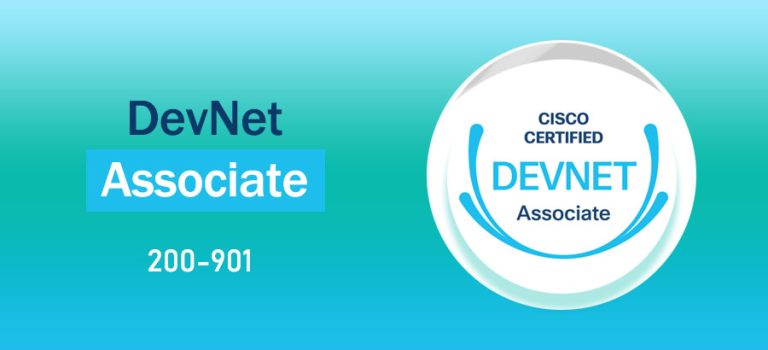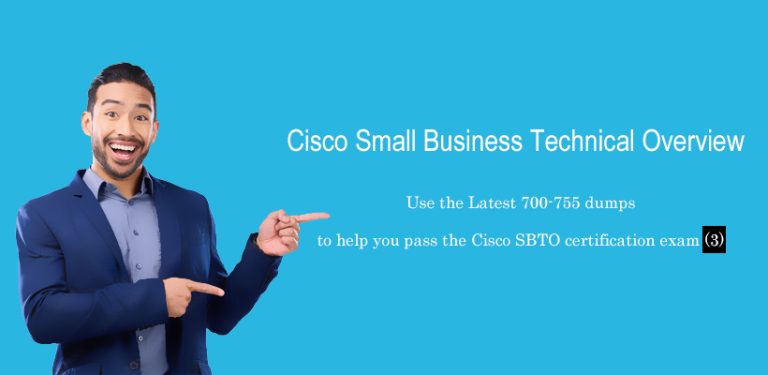leads4pass offers the latest VMware VCP550 exam dumps, you can choose between two modes VCE or
PDF in leads4pass! The leads4pass team works directly with industry experts to provide you with practical
questions and answers to the latest version of the VMware VCP550 exam, as well as descriptive explanations.
Our exam database are regularly updated, including the latest questions and answers to the VMware VCP550 exam.
Valid leads4pass VCP550 dumps VCE and PDF here: https://www.leads4pass.com/vcp550.html
latest leads4pass vcp550 exam pdf: https://drive.google.com/file/d/122JS-4MDQHL0q-97TY3ffWvEITDi9rda/view
latest leads4pass vcp550 exam dumps youtube: https://youtu.be/ke-J60H4v-0
latest free vmware vcp550 exam dumps(questions<1-44>)
QUESTION 1
An administrator is planning a vSphere infrastructure with the following specific networking requirements:
The ability to shape inbound (RX) traffic
Support for Private VLANs (PVLANs)
Support for LLDP (Link Layer Discovery Protocol)
What is the minimum vSphere Edition that will support these requirements?
A. vSphere Essentials Plus
B. vSphere Standard
C. vSphere Enterprise
D. vSphere Enterprise Plus
Correct Answer: D
QUESTION 2
What two IT infrastructure components are virtualized by vSphere Essentials? (Choose two.)
A. Networks
B. Applications
C. Storage
D. Management
Correct Answer: AC
QUESTION 3
An administrator attempts to install vCenter Single Sign-On Server. The installer returns an error message indicating that the installation failed. Prior to the installation, all setup prerequisites were met. The administrator has generated a
vCenter Server Single Sign-On support bundle.
Which two files should the administrator analyze to determine the cause of the failure? (Choose two.)
A. Server\utils\logs\imsTrace.log
B. Server\utils\logs\install.txt
C. %TEMP%\utils\logs\vminst.log
D. %TEMP%\vminst.log
Correct Answer: AD
QUESTION 4
Which Single Sign-On deployment mode should an administrator use for two 5.x vCenter Servers configured with linked mode?
A. Basic Single Sign-On with vCenter Server Heartbeat
B. Multisite Single Sign-On
C. Basic Single Sign-On
D. Single Sign-On with Linked Mode
Correct Answer: B
QUESTION 5
— Exhibit —

— Exhibit —
Which two statements below could explain why the vSphere Client is reporting N/A for hyperthreading? (Choose two.)
The physical CPUs in the host do not support hyperthreading.
A. Hyperthreading is disabled in the host’s BIOS.
B. The physical CPUs in the host are not multi-core.
C. The number of CPUs meets or exceeds the maximum without hyperthreading.
Correct Answer: AB
QUESTION 6
Immediately after installing an ESXi host, an administrator needs to examine the following log files:
var/log/hostd.log
var/log/vmkernel.log
var/log/vpxa.log
Which two connections would allow an administrator to examine these files? (Choose two.)
A. Connecting to the Direct Console User Interface
B. Attaching a vSphere Client directly to the ESXi host
C. Attaching the vSphere Web Client directly to the ESXi host
D. Attaching the vSphere Client to the vCenter Server managing the ESXi host
Correct Answer: AB
QUESTION 7
An administrator is upgrading a vSphere Distributed Switch. The existing switch is version 5.0 and the administrator wants to upgrade to the latest version possible. The environment contains several ESXi 5.1 hosts.
Which two options are available to ensure that the upgraded switch will be compatible with these hosts? (Choose two.)
A. Upgrade the vSphere Distributed Switch to 5.5
B. Upgrade the ESXi 5.1 hosts to version 5.5, then upgrade the vSphere Distributed Switch to 5.5
C. Upgrade the vSphere Distributed Switch to 5.1
D. Upgrade the ESXi host switches to 5.5, then upgrade the vSphere Distributed Switch to 5.5
Correct Answer: BC
QUESTION 8
To avoid unnecessary planned downtime, what is the minimum version of VMware Tools that, if installed, will decrease the need for virtual machine reboots following VMware Tools
upgrades?
A. 5.5
B. 5.1
C. 5.0
D. 4.1
Correct Answer: B
QUESTION 9
Which two Identity Sources are available to add for vCenter Single Sign-On authentication? (Choose two.)A. LocalOS
B. OpenLDAP
C. NIS as an LDAP Server
D. VCMSDS
Correct Answer: AB
QUESTION 10
Which VLAN configuration requires switch connectivity defined as an access port?
A. Private VLAN
B. External Switch Tagging
C. Virtual Guest Tagging
D. Virtual Switch Tagging
Correct Answer: B
QUESTION 11
An administrator needs to deploy several virtual machines. Storage contention between the virtual machines should be managed by the VMkernel. Some of the virtual machines will use MSCS and should be highly available across the ESXi
5.5 hosts.
Which two storage options meet these requirements? (Choose two.)
A. iSCSI
B. NFS
C. Fibre Channel
D. vSAN
Correct Answer: AC
QUESTION 12
Which two precautions should a vSphere administrator take before increasing the size of a VMFS datastore? (Choose two.)
A. Unmount the datastore
B. Perform a rescan to ensure that all hosts see the most current storage
C. Quiesce I/O on all disks involved
D. Shut down all virtual machines stored in the datastore
Correct Answer: BC
QUESTION 13
— Exhibit —

— Exhibit —
What action should the vSphere administrator take to allow for a new vApp to be created in the cluster?
A. Enable Distributed Resource Scheduling on the cluster
B. Create a Resource Pool in the cluster, and create the vApp in the Resource Pool
C. Enable High Availability on the cluster
D. Create a new Datacenter, and create the vApp in the new Datacenter
Correct Answer: A
QUESTION 14
— Exhibit —

— Exhibit —
A vSphere administrator receives a report of an issue with a vApp. After connecting to the environment with the vSphere Client, the administrator does not see the vApp, but instead
sees the inventory shown in the exhibit.
What explains this behavior?
A. The administrator is connected to the ESXi host running the vApp.
B. The administrator is using the Web Client.
C. The vApp is in a partially deleted state.
D. The vApp has been converted to a resource pool.
Correct Answer: A
QUESTION 15
A system administrator is unable to clone a windows 2008 server while connected directly to an ESXi host through vSphere Client.
Which two methods can be used to complete the task? (Choose two.)
A. Connect to vCenter Server and retry the operation.
B. Use VMware Converter to perform the operation.
C. Connect to the host using the Web Client and retry the operation.
D. Use VMware Configuration Manager to perform the operation.
Correct Answer: AB
QUESTION 16
An administrator needs to create and provision new virtual machines from a master image that can not be edited or powered on.
Which type of resource is most appropriate for the administrator to perform the task?
A. Full Clone
B. Linked Clone
C. Template
D. Snapshot
Correct Answer: C
QUESTION 17
A vSphere administrator is unable to vMotion a virtual machine between two hosts. An error message indicates that the USB device is not accessible on the target host.
What is causing this issue?
A. The USB device was not enabled for vMotion when it was added to the virtual machine.
B. ESXi does not support vMotion with a USB device attached to the virtual machine.
C. The VMkernel port for vMotion is not enabled for USB traffic.
D. The virtual machine has the wrong USB controller installed.
Correct Answer: A
QUESTION 18
A vSphere administrator needs to configure a virtual machine to meet a guaranteed CPU performance profile.Which configuration setting could the administrator choose?
A. Set the CPU Limit to High
B. Set the CPU Shares to 500MHz
C. Set the CPU Guarantee to High
D. Set the CPU Reservation to 500MHz
Correct Answer: D
QUESTION 19
An organization’s datastores are configured in a fully automated Storage Distributed Resource Scheduler (SDRS) cluster. The vSphere administrator determines that virtual machines are being migrated between datastores even though the
datastores look evenly balanced. On further investigation, the administrator determines that the datastore’s utilization differ by 2%.
Which Storage DRS setting should the administrator change to prevent the virtual machines from migrating prematurely?
A. Edit the Storage DRS cluster settings to increase the percentage of the Space Utilization Difference threshold
B. Edit the Storage DRS cluster settings to increase the percentage of the I/O imbalance threshold
C. Edit the Storage DRS cluster settings to increase the size of the Space Utilization Difference threshold
D. Edit the Storage DRS cluster settings to increase the size of the I/O imbalance threshold
Correct Answer: A
QUESTION 20
A vSphere administrator enables Fault Tolerance on a powered off virtual machine that has the following configuration:
The virtual machine’s single thin provisioned virtual disk is sized at 100GB.
The datastore that houses the virtual machine has 120GB of free space.
After Fault Tolerance has been configured, another administrator attempts to use Enhanced vMotion to move a 30GB virtual machine file into the same datastore and receives an error.
What condition could cause this behavior?
A. Fault Tolerance inflated the virtual machine’s virtual disk file.
B. Fault Tolerance created a temporary logging file on the same datastore.
C. Fault Tolerance created a secondary copy of the virtual machine’s virtual disk file.
D. The Fault Tolerance logging file ran out of disk space.
Correct Answer: A
QUESTION 21
While testing a Fault Tolerance setup on a virtual machine, a system administrator notices that the DRS automation level of the virtual machine has been automatically set to Disabled.
The administrator needs to enable DRS to migrate the Fault Tolerance virtual machine to balance the cluster’s CPU and memory loads.
What should the administrator do?
A. Enable Enhanced vMotion Compatibility (EVC) in the vSphere cluster.
B. Move the virtual machine to a VMFS 5 datastore built on shared storage.
C. Manually change the DRS automation level of the virtual machine to Enabled.
D. Move the secondary virtual machine to a host with a Fault Tolerance VMkernel port.
Correct Answer: A
QUESTION 22
— Exhibit —

— Exhibit —
A vSphere administrator has misconfigured vMotion in such a way thatvMotion migrations are failing.
Based on the information shown, what is the cause of the problem?
A. The vMotion VMkernel ports on the hosts are configured with the same IP address.
B. The labels of the vMotion VMkernel ports are not identical.
C. The vMotion VMkernel ports are not labeled identically.
D. The vMotion VMkernel ports are using the same uplink.
Correct Answer: A
QUESTION 23
A system administrator detects that a VDP Appliance that has been operational for 6 months has become inconsistent or unstable.
Which action should the administrator take to recover the VDP appliance and what will be the impact on the vSphere environment?
A. Perform a VDP rollback to the most recent validated checkpoint. All backup and configuration changes made after the checkpoint will be lost.
B. Perform a VDP rollback to the most recent validated checkpoint. Configuration changes after the checkpoint will be lost, but backup data will remain intact.
C. Restore a copy of the latest backup of the VDP appliance. All backup data and configuration changes after the backup was made will be lost.
D. Restore a copy of the latest backup of the VDP appliance. All configuration changes after the backup was made will be lost, but backup data will remain intact.
Correct Answer: A
QUESTION 24
Which two features are different between VDP and VDPA? (Choose two.)
A. Support for guest level backups of SQL and Exchange
B. Ability to perform file level recovery
C. Virtual machines supported per appliance
D. Support for image level backups
Correct Answer: AC
QUESTION 25
An administrator must determine which Update Manager procedures can be performed using the vSphere Web Client, and which must be completed using the Windows vSphere client.
Which two tasks require the use of the Windows vSphere client? (Choose two.)
A. Attach and detach baselines to inventory objects
B. Scan inventory objects for compliance
C. Create a baseline for an inventory object
D. Stage a baseline for remediation
Correct Answer: CD
QUESTION 26
A security audit has revealed that a virtual machine on vSwitch1 is receiving all traffic sent to the virtual switch, violating corporate policy. The vSphere administrator examines the properties for vSwitch1, as shown in the exhibit:
— Exhibit —

— Exhibit —
Which configuration explains why the virtual machine is receiving all traffic sent to vSwitch1?
A. The Production port group has the Promiscuous Mode policy set to Accept.
B. vSwitch1 has the Promiscuous Mode policy set to Reject.
C. The Network Failure Detection policy on the Production port group is set to Link Status plus Beaconing.
D. The Network Failure Detection policy on vSwitch1 is set to Link Status only.
Correct Answer: A
QUESTION 27
— Exhibit —

— Exhibit —
An administrator receives notice of a large number of ARP table issues. The issues began after a maintenance window 36 hours ago. The issue did not exist prior to the maintenance
window.
Which change was made to the port group that is causing the ARP table issue?
A. Notify Switches was changed to No.
B. Uplink 2 was changed from Standby to Active.
C. Failback was changed to Yes.
D. Network failure detection was changed to Link status only.
Correct Answer: A
QUESTION 28
— Exhibit —

— Exhibit —
A vSphere administrator attempts to manually vMotion a virtual machine but receives error messages related to the Shared Storage datastore shown in the exhibit.
The administrator uses the vSphere Web Client and locates the datastore settings shown:
Which action should the administrator take to resolve these errors?
A. Reconnect server3 to the vCenter server.
B. Select server3 and click Mount.
C. Remove server3 from the cluster then re-add it.
D. Right-click Not connected and select Connect.
Correct Answer: B
QUESTION 29
A SAN administrator recently installed a storage encryption switch on the Fibre Channel Fabric. Shortly after the deployment, several new VMFS5 datastores recently created were dismounted. Attempts to manually mount them fail. VMFS5
upgraded datastores are unaffected. All Storage arrays in use support VASA and VAAI.
What is the root cause of this problem?
A. All newly created VMFS5 datastores are tagged ATS_Only. The storage encryption switch blocks the ATS command.
B. All newly created VMFS5 datastores are tagged XCOPY_Only. The storage encryption switch blocks the XCOPY command.
C. All newly created VMFS5 datastores are tagged WRITE_SAME_Only. The storage encryption switch blocks the WRITE_SAME command.
D. All newly created VMFS5 datastores were formatted with 1MB block size. The storage encryption switch does not support this block size.
Correct Answer: A
QUESTION 30
An administrator is using esxtop to troubleshoot a storage performance issue.
Which parameter should the administrator check to monitor any storage-related vSphere overhead?
A. DAVG
B. KAVG
C. GAVG
D. CMDS
Correct Answer: B
QUESTION 31
An error occurs while building a new virtual machine with a thin provisioned virtual disk size of 20GB. The datastore has 35GB of free space. The datastore is overcommitted by 95GB.
What is preventing the virtual machine from being built?
A. The datastore is built on a thin provisioned LUN that has run out of storage array free space.
B. The datastore has reached the maximum overcommitment threshold.
C. The virtual disk used by the virtual machine cannot be thin provisioned on this datastore.
D. The virtual disk used by the virtual machine requires more free space than is available in the datastore.
Correct Answer: A
QUESTION 32
A vSphere administrator enables and configures a Software iSCSI Initiator, and configures an iSCSI vmkernel portgroup with Port Binding. The SAN administrator creates a few LUNs on an iSCSI server. However, when the vSphere
administrator adds the IP address of the iSCSI server in the Dynamic Discovery list, no iSCSI targets are detected.
What condition would result in this behavior?
A. The iSCSI vmkernel portgroup and the iSCSI server are on different subnets.
B. The iSCSI server IP address should be entered in the Static Discovery instead of Dynamic Discovery list.
C. The network card bound to the iSCSI portgroup is 1Gbps Ethernet instead of 10Gbps.
D. A Software iSCSI Initiator cannot use Port Binding in conjunction with Dynamic Discovery.
Correct Answer: A
QUESTION 33
A vSphere administrator configures a preferred heartbeat datastore in an HA/DRS cluster configuration. The vCenter Server identifies an alternative preferred datastore.
Why would vCenter Server identify an alternative preferred datastore over the administrator’s preference?
A. The selected datastore contains powered-on virtual machines.
B. The selected datastore is formatted with a 1 MB block size.
C. The selected datastore is an NFS datastore.
D. The selected datastore is not accessible to all of the hosts.
Correct Answer: D
QUESTION 34
The load is high on a HA/DRS cluster. DPM is enabled. A vSphere administrator determines that hosts are NOT powering on automatically to support the load.
Which configuration would result in this condition?
A. VM-to-VM or VM-to-Host DRS rules have been configured that restrict where some VMs can be moved.
B. DPM has been set to the most Conservative threshold.
C. Some of the virtual machines have been removed from HA consideration by the vSphere administrator.
D. DRS is set to Manual Automation.
Correct Answer: D
QUESTION 35
A virtual machine fails to migrate during a Storage DRS event.
What could cause this issue?
A. Storage DRS is enabled for the datastore cluster but disabled for the virtual disks.
B. Storage DRS is enabled, but vMotion is disabled for the affected virtual machine.
C. The vMotion network used for Storage DRS is down for a host in the cluster.
D. Storage DRS is attempting to migrate the virtual machine between VMFS and NFS datastores.
Correct Answer: A
QUESTION 36
The load on a Fully Automated HA/DRS cluster is critically unbalanced.
What condition could cause this issue?
A. DRS is disabled on one or more virtual machines.
B. The migration threshold is set to Moderate.
C. Storage vMotion is not enabled on the cluster.
D. Storage DRS is disabled on the datastore hosting the cluster’s virtual machines.
Correct Answer: A
QUESTION 37
A vSphere administrator determines that more metrics are available for viewing in the realtime view than are available in the daily view for a virtual machine.
What is the reason for this discrepancy in the number of available metrics?
A. The daily view does not contain all of the metrics that the realtime view does.
B. The default vCenter statistics level is being used.
C. A vCenter statistics level of 4 is being used.
D. The daily view presents a different selection of metrics by default than presented by the realtime view.
Correct Answer: B
QUESTION 38
A VMware administrator determines that the active memory on an ESXi 5.x host is 20% and the consumed memory is 90%.
How much host memory is available to virtual machines?
A. 80%
B. 10%
C. 70%
D. 20%
Correct Answer: A
QUESTION 39
The vSphere administrator needs to check the system health of an ESXi 5.x host using the vSphere Web Client.
Which option in the Monitor tab should the administrator use for the selected host?
A. Performance
B. Hardware Reports
C. Storage Status
D. Issue Log
Correct Answer: A
QUESTION 40
A vSphere administrator needs to configure the environment to send a notification to a monitored email address every time a vSphere alarm is triggered.
Which procedure should the administrator use to accomplish the task?
A. Use the vSphere web client to configure the vCenter Server SMTP settings. Edit the alarm action to send a notification email.
B. Use the vSphere web client to configure the vCenter Server SNMP settings. Edit the alarm action to send a notification email.
C. Use the vSphere web client to create a vCenter Server scheduled task that will send a notification email when an alarm is triggered.
D. Use the vSphere web client to create a vCenter Orchestrator workflow that will send a notification email when an alarm is triggered.
Correct Answer: A
QUESTION 41
Which default alarm definition will send a notification trap if the redundant storage path is lost?
A. Cannot connect to storage
B. Datastore removed from host
C. Host storage status
D. Hardware health changed
Correct Answer: A
QUESTION 42
— Exhibit —

— Exhibit —
The vCenter Operations Manager dashboard is showing Health issues associated with the selected virtual machine. There have been no availability or configuration issues with the virtual machine, and the workload badge is still green:
How should an administrator resolve this issue?
A. Select the Anomalies badge to identify the cause of the abnormal behavior, then take appropriate action.
B. Select the Stress badge to identify the cause of the increased stress, then take appropriate action.
C. Select the Risk badge, identify the host at risk, and migrate the VM to a host with more resources.
D. Select the Risk badge to identify how much time is remaining before CPU resources are gone, then assign more resources.
Correct Answer: A
QUESTION 43
Time Remaining, Capacity Remaining, and Stress are minor badges of which major badge in vCenter Operations Manager?
A. Health
B. Risk
C. Efficiency
D. Workload
Correct Answer: B
QUESTION 44
Which minor badge items make up the Efficiency badge score for an ESXi host in vCenter Operations Manager?
A. Workload, Anomalies, Faults
B. Workload, Stress, Density
C. Time Remaining, Capacity Remaining
D. Reclaimable Waste, Density
Correct Answer: D
Free leads4pass vcp550 Exam questions (1-44) help you take the first step and want 100% through vmware vcp550 Exam,
we recommend that you try a premium leads4pass vcp550 dump in VCE and PDF here: https://www.leads4pass.com/vcp550.html
p.s.latest leads4pass vcp550 exam pdf: https://drive.google.com/file/d/122JS-4MDQHL0q-97TY3ffWvEITDi9rda/view
p.s.latest leads4pass vcp550 exam dumps youtube: https://youtu.be/GHDBrmFTa1k



